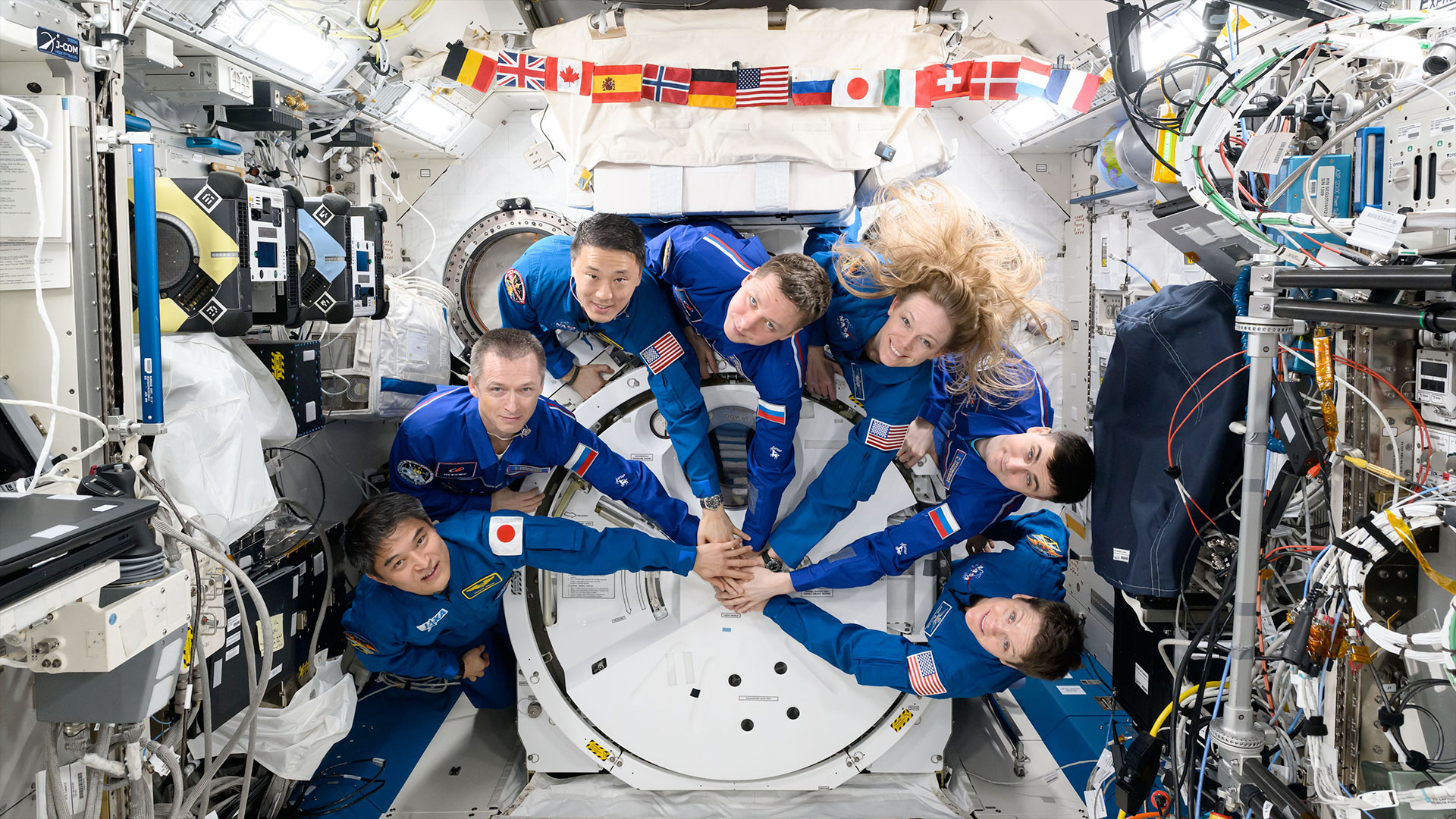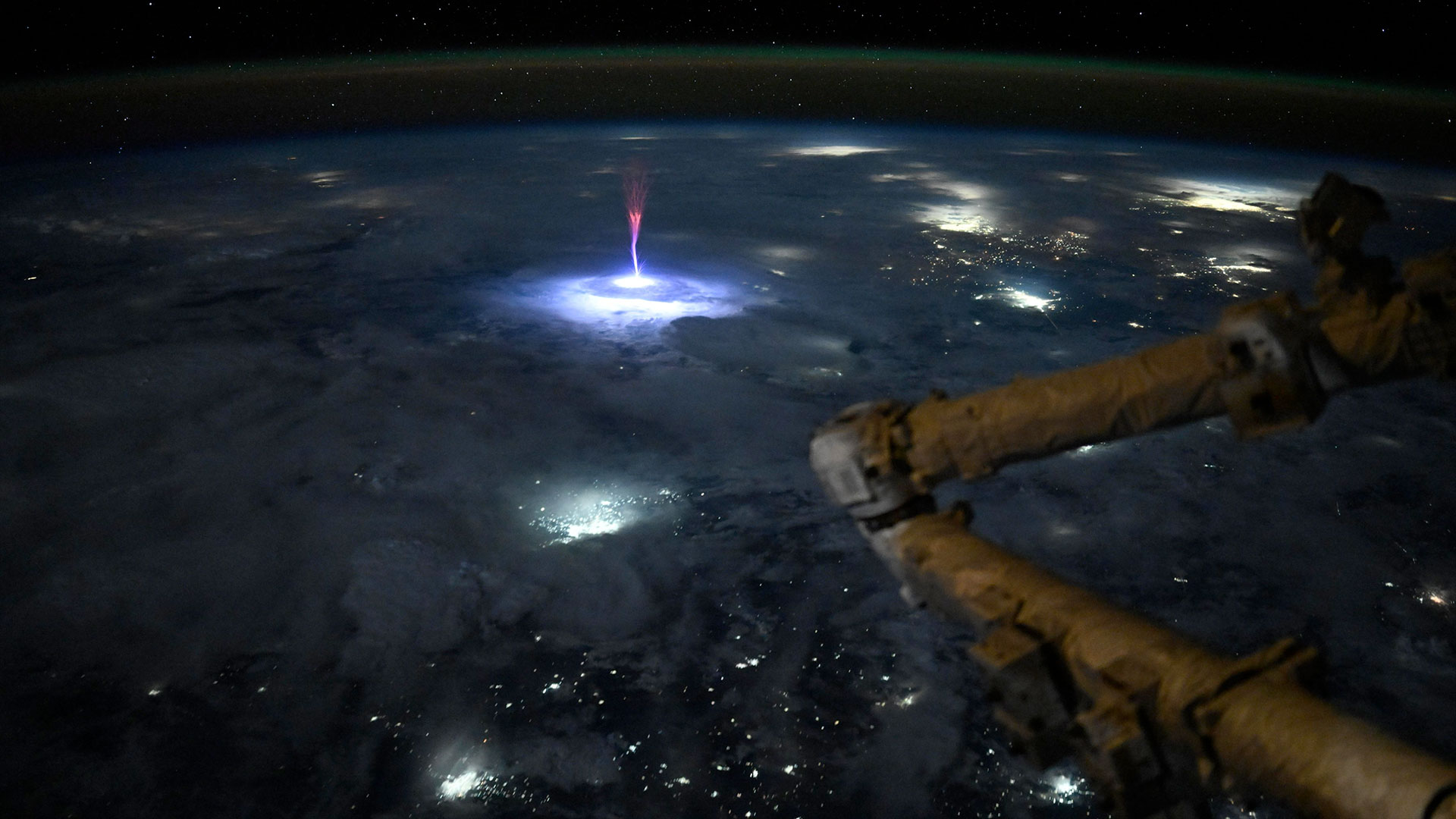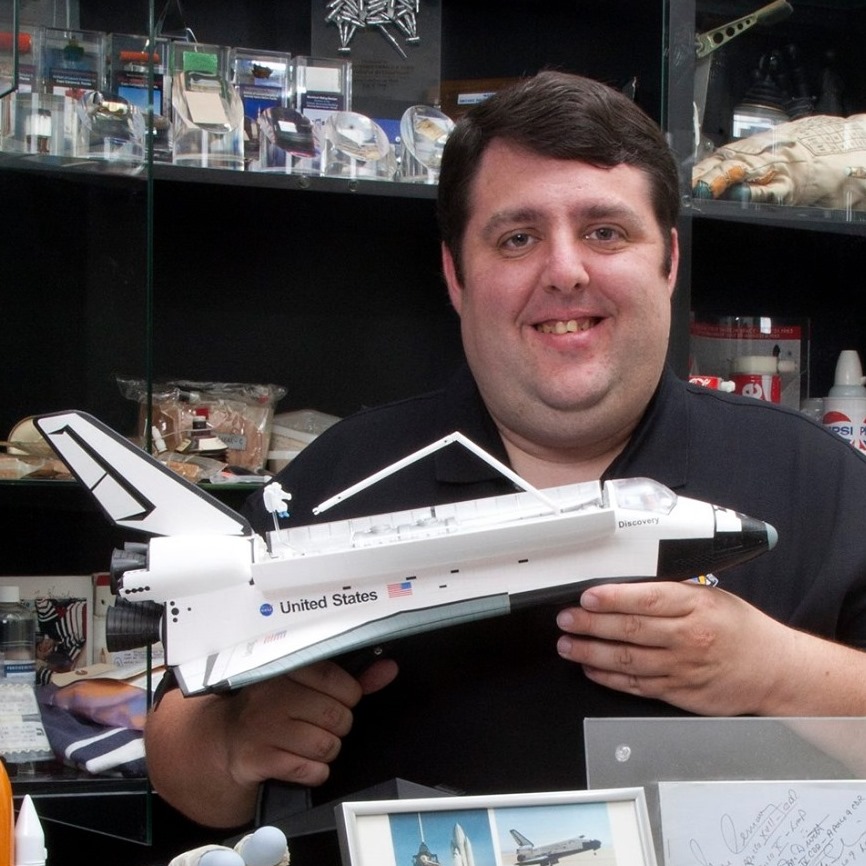Seeing 'fireworks' on Earth from space | On the ISS this week June 26 - July 4, 2025
A look back at the week's activities for the Expedition 73 and Axiom Mission 4 crews.

The Expedition 73 crew threw out their trash, prepared for the arrival of new cargo and played host to an international team of scientists, all while conducting science and maintaining their home away home during their week aboard the International Space Station.
Orbital observation
On Thursday (July 3), NASA astronaut Nichole Ayers saw a firework, of sorts, in space.
"Just. Wow. As we went over Mexico and the U.S. this morning, I caught this sprite," wrote the Expedition 73 flight engineer on social media. "Sprites are TLEs or Transient Luminous Events, that happen above the clouds and are triggered by intense electrical activity in the thunderstorms below."
"We have a great view above the clouds, so scientists can use these types of pictures to better understand the formation, characteristics and relationship of TLEs to thunderstorms," she wrote.

Science status
Among the research that was conducted by the Expedition 73 crew aboard the space station this week was:
Earthshine from ISS — NASA flight engineer Jonny Kim used a camera to photograph the moon. More than just a pretty picture, though, his session was timed to coincide with a specific segment of the lunar cycle so scientists could use the resulting imagery to study "Earthshine," the reflection of our planet's light bouncing off the lunar surface. The research could lead to a better understanding of how the climate and other aspects of our atmosphere affect Earth's albedo (or shine).
Muscle Stimulation — If you don't use it, you lose it. Scientists have known for decades that dormancy on and off Earth can lead to muscle degradation. Astronauts traditionally combat this by exercising every day. This week, Nichole Ayers tested out electrical stimulation as an add on to her workout. Anne McClain assisted Ayers in the activity by operating the equipment to measure the results.
Breaking space news, the latest updates on rocket launches, skywatching events and more!
Drain Brain 2.0 — Expedition 73 commander Takuya Onishi and Ayers took turns wearing electrodes on their necks and chests to measure how their blood flows from their brains to their hearts. The data collected from the trials will help increase our understanding of how blood and its movement throughout our bodies adapts to weightlessness.
On the Russian side of the station, Sergey Ryzhikov captured hyperspectral imagery of landmarks in both Mexico and South America. He also tested virtual reality specs to see how his balance and visual perception have adjusted to being in microgravity.
Station keeping
The Expedition 73 crew also devoted time to maintaining the space station's systems, including:
Progress MS-29 — Russia's 91st uncrewed cargo ship dedicated to supplying the ISS departed on Tuesday (July 1), after seven months being docked to the space-facing port on the Poisk module. Cosmonauts Sergey Ryzhikov and Alexey Zubritskiy completed filling the Progress with refuse and equipment no longer needed before the spacecraft left the station.
Progress MS-31 — Ryzhikov and Zubritskiy also used a laptop computer to practice remotely docking the next cargo ship to arrive, should Progress M-31's autonomous system go awry. Launched on Thursday, the space freighter is scheduled to dock to the Poisk module on Saturday (July 5).
Emergency equipment — Jonny Kim with NASA spent part of his day on Wednesday conducting a routine checkout of the station's supply of portable emergency hardware, such as fire extinguishers and breathing masks.
Astronaut activity
On Thursday, Colorado-born Nichole Ayers answered reporters' questions from KMGH-TV in Denver.
"Growing up there right in Colorado, I got to see the Thunderbirds fly over every year, so I knew that the Air Force Academy existed ... and growing up in the shuttle era, as soon as I found out you could fly the shuttle, I was like, 'That's what I want to do!'" Ayers said, explaining what attracted her to becoming a NASA astronaut.
Axiom Mission 4 (Ax-4)
The four members of the Axiom Mission-4 (Ax-4) crew "hit the ground running" when they began their first full week aboard the space station.
Commander Peggy Whitson worked on cancer research, observing how tumor cells react to microgravity. Pilot Shubhanshu Shukla with the Indian Space Research Organisation (ISRO) studied the growth and genetic behavior of algae and how microscopic creatures called tardigrades survive and reproduce in space.
Sławosz Uznański-Wiśniewski of the European Space Agency (ESA), one of Ax-4's two mission specialists, tested an acoustic monitoring device designed to improve how sound levels are tracked aboard the space station. At the same time, Tibor Kapu of the Hungarian to Orbit (HUNOR) astronaut program, monitored radiation levels using a dosimeter, while also growing microgreens.
The four also participated in multiple outreach activities, including speaking with aspiring female astronauts from Mexico, Spain, Germany and the U.K.; addressing the members of Poland's Parliament; and connecting with students in India.
By the numbers
As of Friday (July 4), there are 11 people aboard the International Space Station: Expedition 73 commander Takuya Onishi of JAXA, Anne McClain, Nichole Ayers and Jonny Kim of NASA and Kirill Peskov, Sergey Ryzhikov and Alexey Zubritsky of Roscosmos, all flight engineers, as well as Ax-4 commander Peggy Whitson, pilot Shubhanshu Shukla of ISRO and mission specialists Sławosz Uznański-Wiśniewski of ESA and Tibor Kapu of HUNOR.
There are three docked crew spacecraft: SpaceX's Dragon "Endurance" attached to the forward port of the Harmony module, Dragon "Grace" on the space-facing port of Harmony and Roscosmos' Soyuz MS-27 attached to the Earth-facing port of the Prichal node.
There is one docked cargo spacecraft: Roscosmos' Progress Progress MS-30 (91P) attached to the aft port of the Zvezda service module. Progress MS-31, launched on Thursday (July 3) is expected to dock to the space-facing port of the Poisk module on Saturday (July 5).
As of Friday, the space station has been continuously crewed for 24 years, 8 months and 3 days.

Robert Pearlman is a space historian, journalist and the founder and editor of collectSPACE.com, a daily news publication and community devoted to space history with a particular focus on how and where space exploration intersects with pop culture. Pearlman is also a contributing writer for Space.com and co-author of "Space Stations: The Art, Science, and Reality of Working in Space” published by Smithsonian Books in 2018.
In 2009, he was inducted into the U.S. Space Camp Hall of Fame in Huntsville, Alabama. In 2021, he was honored by the American Astronautical Society with the Ordway Award for Sustained Excellence in Spaceflight History. In 2023, the National Space Club Florida Committee recognized Pearlman with the Kolcum News and Communications Award for excellence in telling the space story along the Space Coast and throughout the world.
You must confirm your public display name before commenting
Please logout and then login again, you will then be prompted to enter your display name.
